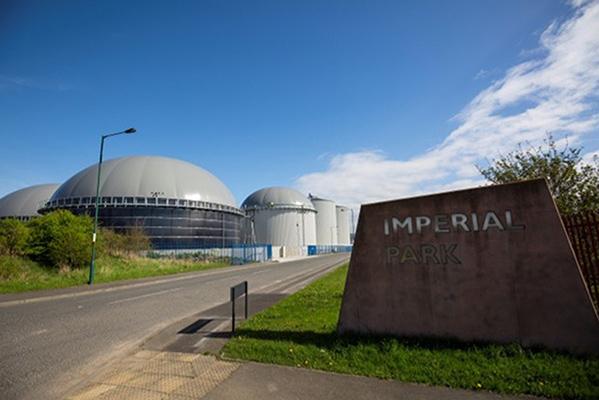Thank you, Steve!
This project was certainly a milestone in bioconstruct’s history.
We were contracted to design, construct and commission the Imperial Park biogas/anaerobic digestion (AD) plant in 2015. We signed extensive guarantees for the plant’s technical availability which gave the investor sufficient financial security. The plant was designed for an electrical capacity of 5.1 megawatts and is situated in Middlesborough, England. Only 11 months (roughly) were needed for construction, after which the digester tanks were ready for their first fill with special substrate transferred from another plant. Since then, the plant has been operated and maintained by BioConstruct NewEnergy, our sister company in the UK.
bioconstruct designed the biogas plant with an aim of giving the operator as much flexibility as possible when choosing substrates so that it can be operated as economically as possible. This entailed, among other things, creating a generous pre-storage volume with multiple pre-storage and reception tanks, some of them heated, and enabling parallel infeed of solid and liquid substances. As a result, it’s easier to get through times when certain substrates have limited availability, while additional substrates can also be put in storage. The plant is able to process liquid substrates such as slurry, blood or fat and can mix them with solid feedstocks such as supermarket or restaurant waste before digestion using a special pump system. After mixing, they’re pumped into the digester tanks. Combining the two infeed lines makes the biogas plant able to process approximately 131,000 tonnes of organic waste per year and convert that into up to 5.1 megawatts of electrical energy plus approximately the same amount of thermal energy through the combined heat and power (CHP) systems.
bioconstruct installed a total of four GE Jenbacher CHP systems. To reduce the plant’s maintenance costs to the lowest amount possible, a choice was made to use high-quality components and process control systems right from the start. The external biological desulphurisation is a good example of this, as it keeps the costs for activated carbon and other expensive consumables as low as possible. Furthermore, the piping system – made fully of stainless steel – and the centrally stirred vertical digester tank – made of enamelled steel – help reduce the maintenance and operating costs as far as possible.
